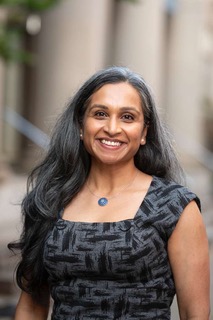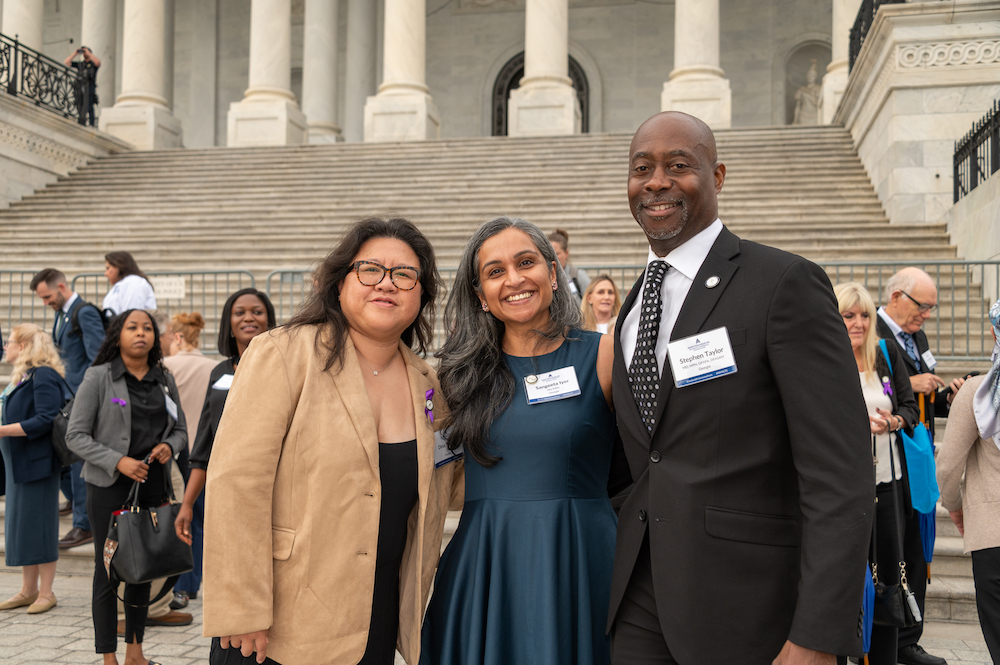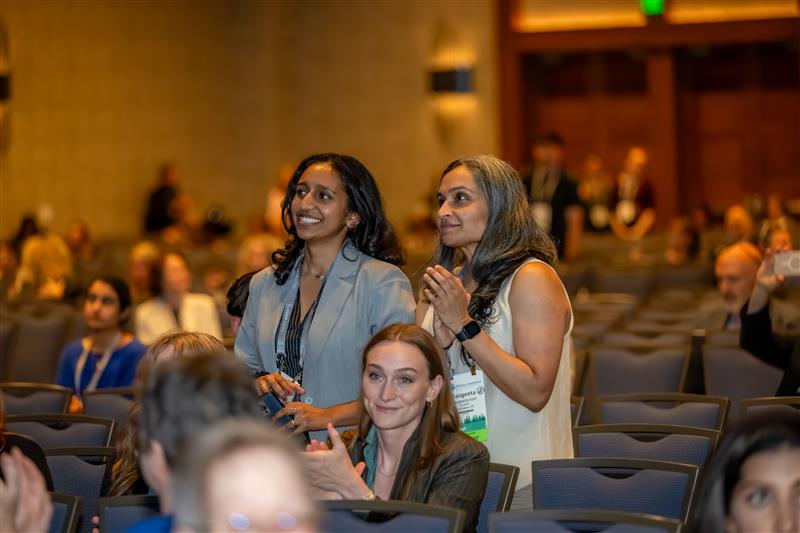Blog
Finding Community through ASAM鈥檚 Ruth Fox Scholarship

Sangeeta Iyer, MD, MPH, has cared for patients from coast to coast. She completed her internal medicine residency in Philadelphia, practiced primary care in Washington, DC, worked with the Navajo Nation in New Mexico and indigenous communities in Northern California, and eventually returned to the East Coast, where she is now completing her addiction medicine fellowship at Howard University. While her work scenery has changed, she’s now settled in at her professional home – ASAM – thanks in part to the Ruth Fox Scholarship Program, funded by the Ruth Fox Memorial Endowment Fund.
As 2025 scholarship recipients, Dr. Iyer and her cohort received access to this past year’s Annual Conference and three years of complimentary ASAM membership. But importantly, Dr. Iyer credits the program for expanding her professional network as she prepares for the next stage of her career as an addiction specialist physician.
In this Q&A, Dr. Iyer shares what pushed her to take the leap into addiction medicine and how the Ruth Fox Scholarship Program has deepened her connection with ASAM.

You spent several years caring for patients in primary care settings. What led you to seek specialized training in addiction treatment?
At the start of the COVID-19 pandemic, I worked with an indigenous community in Northern California. I was one of the few physicians in this small community, a community that struggled with people who were underhoused and/or using substances such as opioids or methamphetamines. On the advice of a nurse practitioner, who gave me a crash course on how to prescribe buprenorphine for opioid use disorder (OUD), I was encouraged to apply to join the California Society of Addiction Medicine and the Medical Education and Research Foundation for the Treatment of Addiction (MERF) Scholar program to gain mentorship on caring for individuals with substance use disorders. As a rural provider without any support, I jumped at the chance and learned quickly how to provide buprenorphine and conduct motivational interviewing. This knowledge translated well to my work with the Navajo Nation, with whom I was also working, and where alcohol use was much more common.
Through these experiences, I recognized how necessary it was for me to have more skills in addiction medicine. Even though throughout my career I’ve had patients who’ve used substances, it wasn’t until 2020 that it became one of the primary things I would treat, and I realized how much extra training I needed.
When did you decide to pursue a fellowship in addiction medicine?
I eventually left the reservation and went to Johns Hopkins University for my master’s degree in public health. While there, I joined my local Maryland-DC Society of Addiction Medicine chapter and attended the 麻豆传媒在线 Annual Conference in Dallas for the first time, where I met with other addiction specialists to discuss board certification and the application process. After the conference, I decided to apply for a fellowship. I was going off cycle, so it was a bit of a scramble, but ultimately, I returned to DC for a fellowship at Howard University, which allowed me to stay connected with my community of professors in the Baltimore and DC areas.
How did you discover the Ruth Fox Scholarship Program, and how has it impacted your career?
When I attended the Annual Conference in Dallas, my roommate introduced me to several current Ruth Fox Scholars and encouraged me to apply. I was very grateful when I found out I got it in 2025.
When I arrived at the Annual Conference in Denver, there was suddenly this huge community of conference attendees, and within that, I had a small community of Ruth Fox Scholars to go through the event with. I was meeting these colleagues in person for the first time, but it already felt like I knew them because we shared a common mission. We also had our own space at the conference where we got to meet so many of the speakers – it felt very exclusive. For example, I remember chatting with Dr. Emily Brunner, who just led the development of and presented on ASAM’s new Joint Clinical Practice Guideline on Benzodiazepine Tapering only a few hours before.
Ultimately, the Ruth Fox Scholarship Program is one way for me to feel more connected to ASAM, and ASAM has given me a greater network in addiction medicine and a broader knowledge of the different spaces in addiction medicine. I think the experiences of someone who’s working in a recovery center, an opioid treatment program, a hospital, a community health center, or a private clinic are so different. ASAM brings you together to say you’re all fighting for the same thing.

Do you have a favorite 麻豆传媒在线-related memory?
Yes, and it’s a bit of a silly one! For background, I always keep my camera on whenever I attend virtual didactics or lectures, and that little action has led so many people to recognize my face. When I attended the Annual Conference, the number of people who would walk up to me and already know me by recognizing my face was hilarious, even if we had never spoken before. It happened again at the Addiction Medicine Advocacy Conference. It’s one of my favorite memories because it was like small worlds colliding in the addiction medicine space. I think it’s so lovely, especially in this age of being virtual, when you may sometimes feel like you don’t have colleagueship and feel alone. ASAM really provides people with a space to gather and converse.
You’re now wrapping up your addiction medicine fellowship. Was there a defining moment that ultimately inspired you to pursue a career in this field?
There’s one person whose story shapes my belief in quality care, including primary care, for people who use substances. While I was working in a mobile primary care unit in Philadelphia, I met a community health worker at a nearby van that provided wound care and other services to individuals living with addiction. She would vouch for our primary care practice so people would feel comfortable, especially since this was a population that has generally been ‘othered’ by the health care system. As lovely as she was, I was always trying to get her to seek primary care. But for the longest time, because she had used substances in the past, she just didn’t come in.

After I left the mobile unit, I learned that she eventually did come in for a primary care visit, which was wonderful. But she was diagnosed with breast cancer, received care, and later passed away. On one hand, I’m really glad she was finally able to find care that she felt comfortable with. But I always have in the back of my mind, could she have been helped earlier? People like her are why I think that primary care and addiction medicine need to be housed together in a sense. I have always believed that there needs to be non-stigmatizing care for all populations in primary care, and my fellowship in addiction medicine has given me the skills to continue caring for these populations in my primary care setting. So this is for her.
The Ruth Fox Scholarship is made possible by generous donations to the Ruth Fox Memorial Endowment Fund. The program provides addiction medicine physicians-in-training with three years of ASAM membership and access to educational, mentorship, and networking opportunities.
helps us continue supporting the next generation of addiction specialist physicians.
